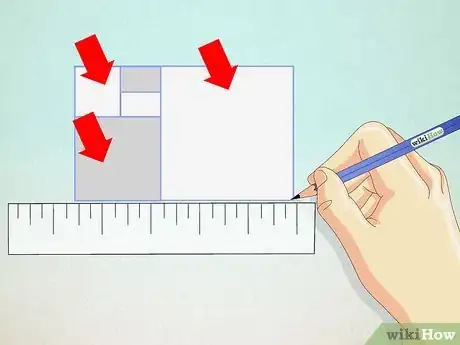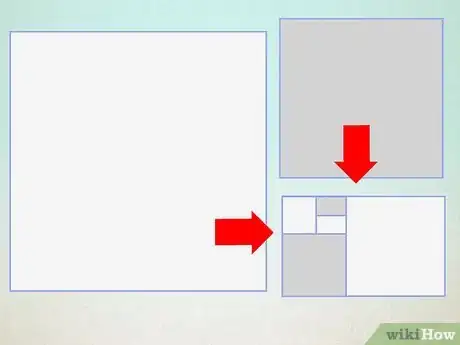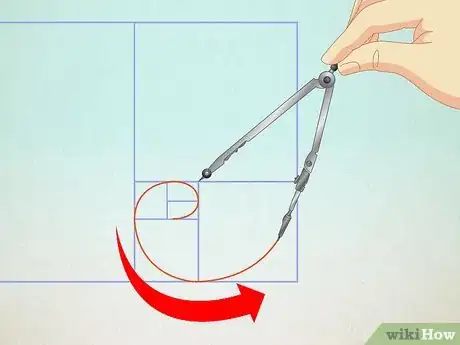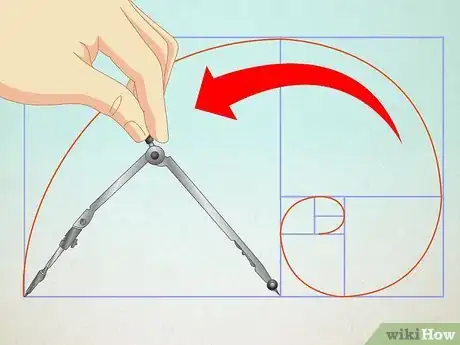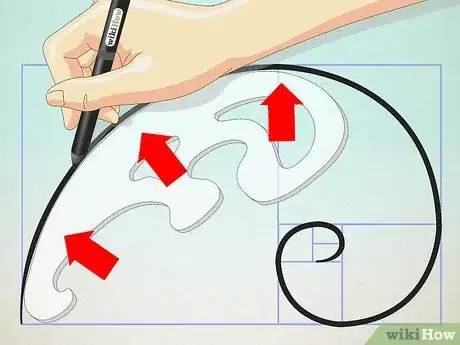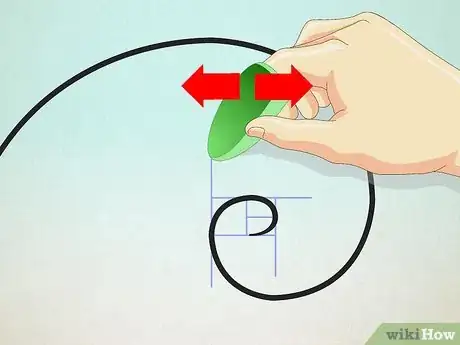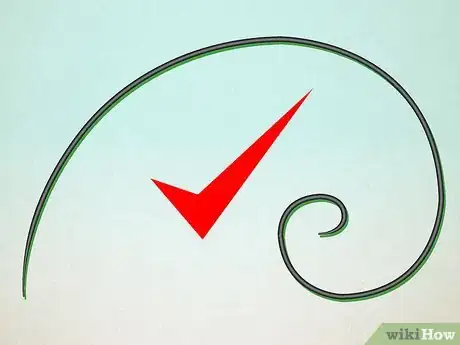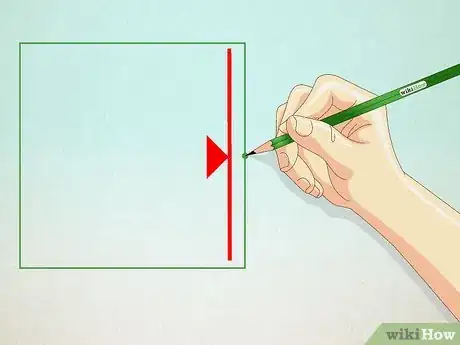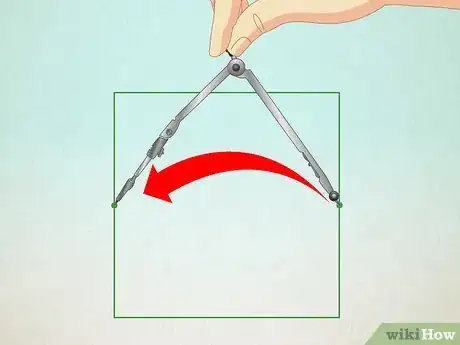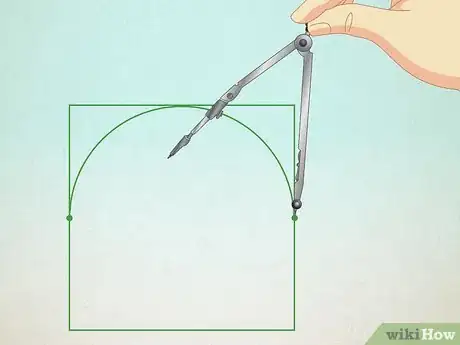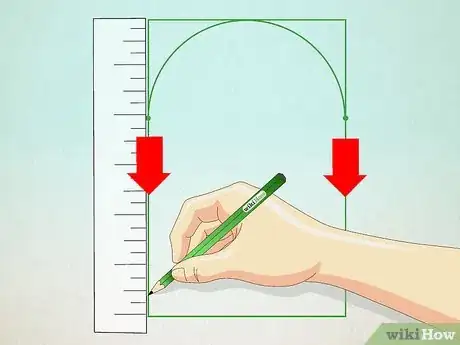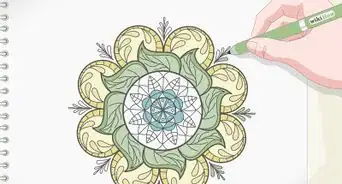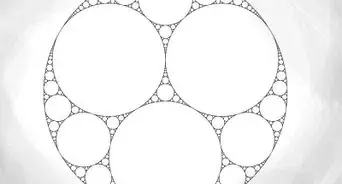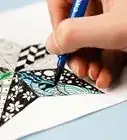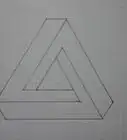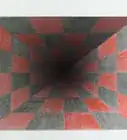This article was co-authored by Renée Plevy. Renée Plevy is an Internationally Acclaimed Portrait Artist from New York/Palm Beach who has painted The Grand Dames of Palm Beach and various celebrities and community leaders. With over 50 years of experience, Renée specializes in painting realistically in oil and capturing the soul of the person. She has studied under internationally renowned portrait artists John Howard Sanden, David Leffel, Robert Beverly Hale, Clyde Smith, and Leonid Gervits. Renée is featured in over 68 shows and galleries including a one-woman museum show at the Paterson Museum. She has garnered numerous awards including “Artist of the Year” from The Bloomfield Art League and First Prize from the Boca Raton Museum Artist’s Guild. Renée has even painted a portrait of celebrity, Vanilla Ice. She also teaches at the Boca Raton Museum Art School - formerly at SVA in Manhattan.
This article has been viewed 424,748 times.
Commonly found in nature, the well-known shape of the golden spiral is a unique form but can be sketched nicely using the elements of the Fibonacci sequence. It is fairly simple to draw, and can be quite beautiful when done correctly.
Steps
Full Method
-
1Gather your materials. You'll need to draw a system of squares that will end up "inscribing" the spiral, acting as guide lines for your drawing. Gather your materials, making sure that you have everything––the list of what is needed is found in the Things You'll Need section below all the steps.
-
2Draw squares using the Fibonacci sequence. This works by adding the two previous numbers: You get the next one starting from 0 and 1; so, it goes 0, 1, 1, 2, 3, 5, 8, 13, 21, 34, 55, etc. The length of one side of each square should equal a number in the sequence (the 0 is not needed for drawing any of the square), but the beginning point can be called (0,0), if we set it up that way. You will have a 1X1 square (use any unit of measurement you want, at any size, just be consistent) with a second 1X1 drawn next to it on the left side of the first, then down to put 2X2, and right for 3X3, then up for 5X5, and then left to fit 8X8. Below all that, put 13X13 and so on, to as large a square as your paper can fit.Advertisement
-
3Arrange the squares. Draw each of these squares in a counter-clockwise pattern. It will finally form a spiral as you draw a curve through the squares (as instructed later).
-
4Turn the compass. Put your compass, pivot point and pencil, as shown in the picture, with its length set at one unit (side of the first square) long. Turn it 90 degrees counter-clockwise.
-
5Adjust the compass. Adjust the compass so it is now two units long. Again, turn it 90 degrees counter-clockwise. Then 3, then 5, next 8 and continue this process until the squares each have the curving spiral through them.
-
6Ink your spiral. Ink your drawing with pen when you are ready, carefully tracing along the penciled curve. If you're shooting for exceptional accuracy, you can use a French curve to help you.
-
7Erase your guide lines. With the spiral traced in pen, use your eraser to rub out the squares made in pencil.
-
8Done! Congratulations, you've just made the golden spiral!
Rectangle Method
-
1Draw a square with perfectly equal sides. Using a ruler and protractor can help.
-
2Find the halfway point. Find the halfway point on one of the sides.
-
3Align a compass to the opposite corner. Take a compass and find one of the corners on the opposite side from where you took the halfway point. With the needle on the halfway point, place the arm at the opposite corner.
-
4Extend the line. Rotate the compass until the arm is in line with the side where you took the halfway point. This spot will now be the corner for the golden ratio outline rectangle.
-
5Draw the new rectangle. Using a ruler, extend your square into a rectangle with the point you found as one of its corners. This new rectangle can be used as a basis for drawing your spiral.
- You can improve your artistic skills by reading about art.
- Making plenty of sketches.
- Finding a teacher who can help you to look at things from an artist's perspective.
Expert Q&A
-
QuestionWhat happens when you mix opposite colors on the color wheel?
 Renée PlevyRenée Plevy is an Internationally Acclaimed Portrait Artist from New York/Palm Beach who has painted The Grand Dames of Palm Beach and various celebrities and community leaders. With over 50 years of experience, Renée specializes in painting realistically in oil and capturing the soul of the person. She has studied under internationally renowned portrait artists John Howard Sanden, David Leffel, Robert Beverly Hale, Clyde Smith, and Leonid Gervits. Renée is featured in over 68 shows and galleries including a one-woman museum show at the Paterson Museum. She has garnered numerous awards including “Artist of the Year” from The Bloomfield Art League and First Prize from the Boca Raton Museum Artist’s Guild. Renée has even painted a portrait of celebrity, Vanilla Ice. She also teaches at the Boca Raton Museum Art School - formerly at SVA in Manhattan.
Renée PlevyRenée Plevy is an Internationally Acclaimed Portrait Artist from New York/Palm Beach who has painted The Grand Dames of Palm Beach and various celebrities and community leaders. With over 50 years of experience, Renée specializes in painting realistically in oil and capturing the soul of the person. She has studied under internationally renowned portrait artists John Howard Sanden, David Leffel, Robert Beverly Hale, Clyde Smith, and Leonid Gervits. Renée is featured in over 68 shows and galleries including a one-woman museum show at the Paterson Museum. She has garnered numerous awards including “Artist of the Year” from The Bloomfield Art League and First Prize from the Boca Raton Museum Artist’s Guild. Renée has even painted a portrait of celebrity, Vanilla Ice. She also teaches at the Boca Raton Museum Art School - formerly at SVA in Manhattan.
Portrait Artist & Educator When you mix opposite colors on the color wheel, you make them a deeper color. So if your red is too bright to work with the other colors on your painting, you can mix a little green in them. If your green is too bright, and you want to tone it down a little bit, you can add a little red to it.
When you mix opposite colors on the color wheel, you make them a deeper color. So if your red is too bright to work with the other colors on your painting, you can mix a little green in them. If your green is too bright, and you want to tone it down a little bit, you can add a little red to it. -
QuestionCan you create a gold color using other colors?
 Renée PlevyRenée Plevy is an Internationally Acclaimed Portrait Artist from New York/Palm Beach who has painted The Grand Dames of Palm Beach and various celebrities and community leaders. With over 50 years of experience, Renée specializes in painting realistically in oil and capturing the soul of the person. She has studied under internationally renowned portrait artists John Howard Sanden, David Leffel, Robert Beverly Hale, Clyde Smith, and Leonid Gervits. Renée is featured in over 68 shows and galleries including a one-woman museum show at the Paterson Museum. She has garnered numerous awards including “Artist of the Year” from The Bloomfield Art League and First Prize from the Boca Raton Museum Artist’s Guild. Renée has even painted a portrait of celebrity, Vanilla Ice. She also teaches at the Boca Raton Museum Art School - formerly at SVA in Manhattan.
Renée PlevyRenée Plevy is an Internationally Acclaimed Portrait Artist from New York/Palm Beach who has painted The Grand Dames of Palm Beach and various celebrities and community leaders. With over 50 years of experience, Renée specializes in painting realistically in oil and capturing the soul of the person. She has studied under internationally renowned portrait artists John Howard Sanden, David Leffel, Robert Beverly Hale, Clyde Smith, and Leonid Gervits. Renée is featured in over 68 shows and galleries including a one-woman museum show at the Paterson Museum. She has garnered numerous awards including “Artist of the Year” from The Bloomfield Art League and First Prize from the Boca Raton Museum Artist’s Guild. Renée has even painted a portrait of celebrity, Vanilla Ice. She also teaches at the Boca Raton Museum Art School - formerly at SVA in Manhattan.
Portrait Artist & Educator You cannot make a gold color. But you can make the colors around it work. They have to be darker. And they have to add to the actual impression. For example, if you are making a painting and there are various colors around a particular shade of Naples yellow with a bit of lemon yellow, it would look like gold.
You cannot make a gold color. But you can make the colors around it work. They have to be darker. And they have to add to the actual impression. For example, if you are making a painting and there are various colors around a particular shade of Naples yellow with a bit of lemon yellow, it would look like gold. -
QuestionCan I do this without the compass?
 Undertale4141Top AnswererYes, the compass just makes it more exact. You can draw the arches yourself.
Undertale4141Top AnswererYes, the compass just makes it more exact. You can draw the arches yourself.
Warnings
- Be careful with compasses. They can rip your paper, and the point is quite sharp.⧼thumbs_response⧽
Things You'll Need
- Graph paper
- Compass
- Pencil
- Eraser
About This Article
The golden spiral is commonly found in nature and you can draw it using elements of the Fibonacci sequence. You’ll need a piece of graph paper, a compass, a pencil, and an eraser. First, draw squares in a counterclockwise pattern on the piece of paper using the Fibonacci sequence. Simply count up by adding the two previous numbers. Then, use the compass to draw the spiral with the squares as guidelines. Once you’ve finished the spiral, go over your pencil markings in ink and erase the guidelines. For more tips on drawing the golden spiral, like how to use the rectangle method, read on!

